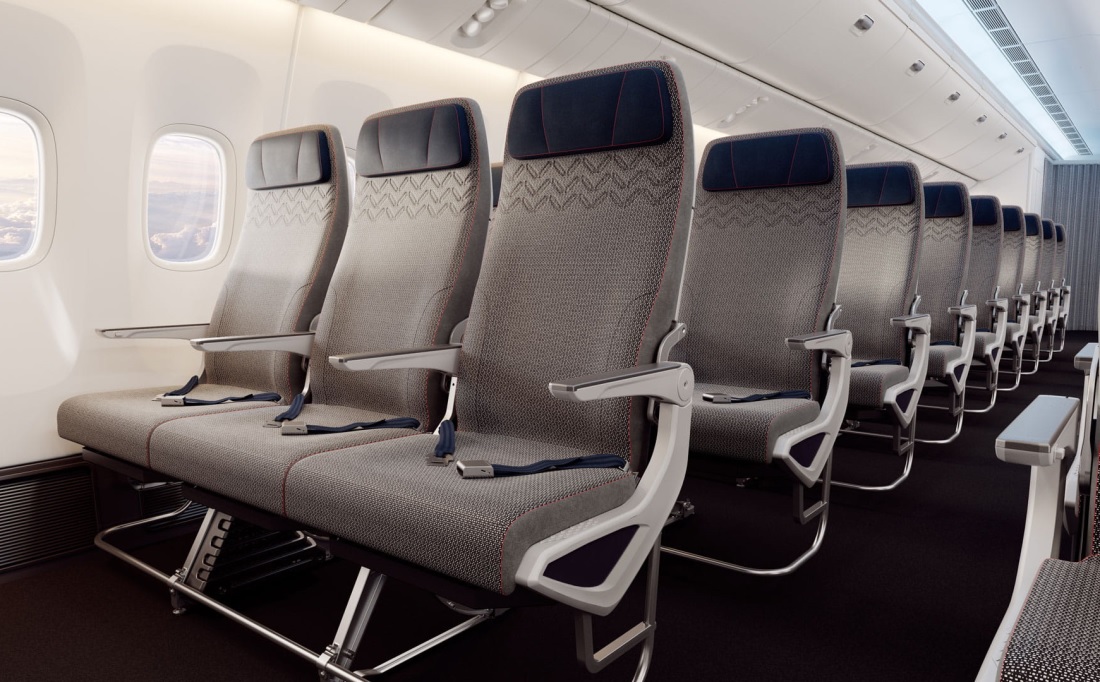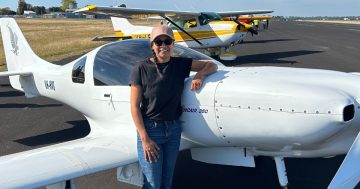
Airline seating displays at trade shows are rarely shown as tightly packed as they would be in to a real-world airline cabin. Photo: Collins Aerospace.
A new study conducted by the University of South Australia (UniSA) has found that, while Australian adults are likely to gain an average of 3 kilograms of weight every decade, public transport and airline seating is increasingly unable to accommodate us.
The study was conducted on behalf of Transport for NSW (TfNSW) and the Department of Transport and Planning Victoria. It was funded by the iMOVE Cooperative Research Centre, a not-for-profit funded by the federal government to deliver research outcomes and impact that benefit project partners, communities and industry by helping to design safer, more sustainable, more efficient and more equitable transport systems.
Its results align with similar research done in other developed countries that found that obesity and weight gain has risen in adults since the 1960s, and in children since the 1980s.
The data was sourced from National Health Surveys (NHS) conducted between 2014 and 2017, and included height and weight data from a sample of about 20,000 Australian adults aged 18 to 64.
“Overall, a likely scenario for Australia over the next 20 years is: no increase in stature, and a 2-3 kilogram increase in weight per decade,” the researchers found.
A more conservative estimate was that there will be “an increase in stature of 10 mm per decade, and an increase in weight of 3 kilograms per decade”.
They found that, despite these size and weight increases – and because commercial airline seating is based on average passenger weight from the 1950s to 1970s – economy airline seats are now unable to safely accommodate up to 68 per cent of male and 22 per cent of female passengers.
The findings are supported in a December 2022 report by Condé Nast Traveller magazine which found that airline seats are in fact getting even smaller at the same time.
“No, you’re not imagining that economy class airline seat sizes have gotten tighter,” the Condé Nast report says. “They certainly have, gradually but quite consistently for more than 25 years now.”
It said that shrinking seats aren’t just uncomfortable, but they’re also unsafe.
“They’re a threat to your health, and even your life if there’s an emergency evacuation from the plane cabin.”
The four big US airlines – United, American, Delta and Southwest – have reduced their seat pitch (the measurement from one seat’s hip point to the seat in the next row) by between 5 cm and 12 cm to an average of about 78 cm since the 1980s, while low cost carriers have gone as low as 70 cm.
This means no US economy class seat currently meets the FAA’s own research standards for the amount of room needed for passengers to safely assume the brace position in the event of an emergency.
The reduced legroom also impedes passengers’ ability to successfully evacuate an aircraft, a process that airliners are certified by the FAA to take no more than 90 seconds.
But airline executives have warned against adopting a one-size-fits-all approach to airline seating, and instead reckon larger passengers should fork out more money for premium seating.
In 2018, former Qantas CEO Alan Joyce told AirlineRatings: “In Qantas, you can have a Jetstar seat, it’s very low cost, it has a tighter seat pitch than Qantas and you know what that product is. You can buy a premium economy seat on Qantas, a business seat or a first-class seat.
“I think the last thing we want to do is to get to one-size-fits-all and everybody’s paying the same price and airfares go back to where they were 20 years ago because the regulators come in thinking they’re doing the right thing. Actually, a lot of consumers will lose out on that,” he added.
While Joyce is on the shorter and lighter end of the size and weight spectrums and has likely never flown economy, his views were supported at the time by then IATA director general Alexandre de Juniac and then-incoming International Air Transport Association chairman successor and Qatar Airways CEO Akbar Al Baker.
Along with airlines, the UniSA report said its dataset can also help industry design better seating on buses, trains, trams and other public transport.
It said that anticipating changes in body size over the decades is an important part of ensuring infrastructure is made to last and can remain fit for use over its entire lifespan.
“This research is not just about numbers on a scale. It’s about understanding the evolving needs of our population and ensuring our transport systems, both on the ground and in the air, are equipped to serve everyone comfortably and safely with human-centred design,” Ian Christensen, managing director of iMOVE CRC, said.
“The data from this study provides a roadmap for the future. It’s an opportunity for designers, policymakers, and industry leaders to come together and create transport solutions that are inclusive, sustainable, and forward-thinking.”
















